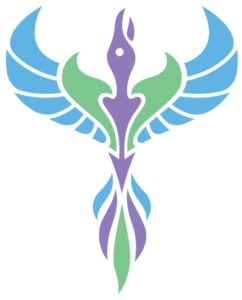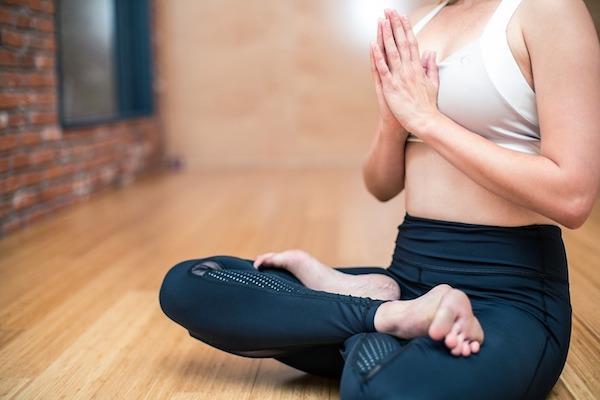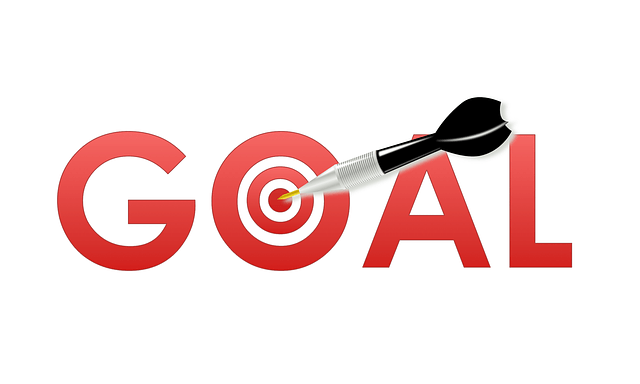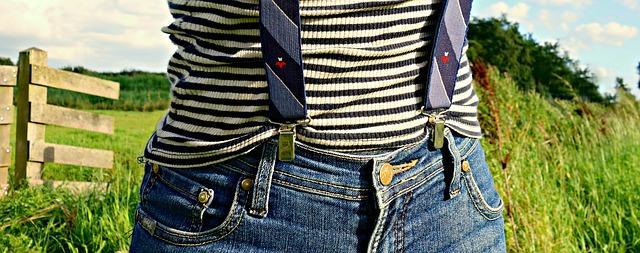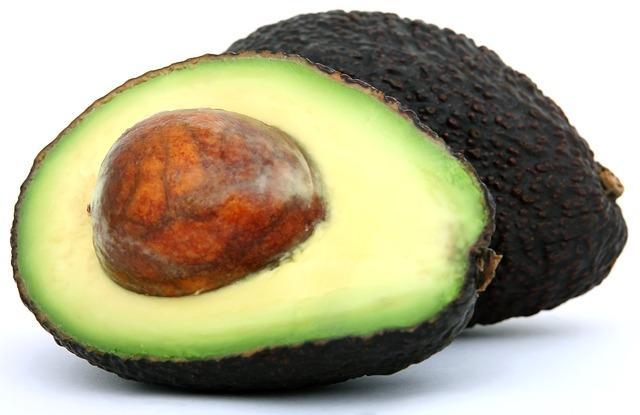Posts Tagged ‘exercise’
Making Exercise an Easier Habit
The first part of making exercise easier is establishing motivation
Everyone knows that exercise is good for them, but that is often not a strong enough call to action in of itself. We want to help you get as specific as possible with your exercise motivation. This will help turn the perceived benefit of exercise into a tangible value.
Take, as an example, a white-collar working scenario:
- 30-60 minute commute each day
- Working in an office
- In front of a computer for 6-8 hours a day
- High stress comes from constant deadlines and performance indicators
- Spends free time at the end of the day relaxing with family
Perversely, we perceive that there is little room for the exercise that will prevent the onset of factors including weight gain, spinal degeneration, illness and injury. Instead, we need to think of exercise as our first line of defense. So what really matters to you? Exercise can help you get there.
How to start exercising: a plan to make it easier
- Seek activities you actually enjoy: and choose variety. No one is saying you have to start running. If you prefer to swim, play soccer or basketball, then go for it. Anything that gets you moving counts.
- Seek to make it a social event: just one friend makes a difference; they hold you accountable and make the perceived physical output less intense.
- Do it first thing in the morning or first thing after work: being disciplined about the schedule, and establishing a regular time that you do it each day will help you stay on track.
- Keep track of your progress and the real value you are deriving: pay attention to positive signs of progress including increased energy reserves, better sleep, less pain or a happier outlook. This is the fuel for your fire!
Exercise is easier than ever in 2018
From on-the-go apps to at-home youtube series, you can find quality exercise in large or small doses no matter where you are. The only thing that is stopping you is YOU! At Community Chiropractic & Acupuncture of Park Slope, we are dedicated to helping people move more to improve their quality of life. Our natural modalities reduce pain and improve range of motion so that you can focus on the things that really matter in life, like prioritizing your health! Give our office in Park Slope a call to schedule an appointment today.
Stretching from Bed
Why bother to get out of bed?
If you are feeling extra lazy on your day off, you don’t have to get out of bed to still give your body some relief with a good stretch. If you are destined for bed on a rainy Sunday, remember that muscle tension will still accumulate; so make some moves from the mattress to keep them at back and keep on relaxing!
From bed, let the stress melt away and try a few simple stretches.
…and of course, always remember to practice deep breathing, especially in bed. The extra influx of oxygen will help you relax further and treat your muscles at the same time. Here are stretches that target the back and hips- two regions that tend to accumulate the most tension during the regular course of life.
- Hamstring stretch: lay flat, and lift one leg up. Raise it as high and straight as possible while keeping your butt planted on the bed. Hold 30 seconds, then switch legs.
- Knee to chest: lay flat. Bring one knee up to your chest, clasping the thigh with both hands. Hold 30 seconds, then repeat with opposite leg.
- Spine twist: Lay flat, bring both knees up to your chest; cross them over and drop down to the right side of your body. Extend left arm the opposite direction and look over your left shoulder. Hold 30 seconds and repeat.
Relaxing, stretching and feeling better with chiropractic in Park Slope
The bed is a cornerstone of wellness. At Park Slope Chiropractic, we want to help you leave pain behind so that you can relax well all the time. If you are suffering from long-standing pain, give our office a call to schedule an appointment today. We can help you determine the root cause of your pain and set a course for treatment that involves chiropractic adjustment, stretching and strengthening that will keep your pain at bay.
Are you Neglecting your Lower Back Muscles
Even the most conscious gym-goers can neglect important muscles
Case in point: the muscles of the lower back which are often neglected during people’s pursuit of the “mirror muscles-” abs, biceps and pecs that make you look attractive but leave you short on stability. Building a great body means building balance, and the muscles of the lower body are essential for stability and spinal health. What’s the point of looking great or having a lot of muscle if the most crucial structures of your body can’t bear the load that this extra muscle brings on? Here are three new sets of muscle to focus on during your next gym session:
- Extensors: posterior muscles which allow for lifting and standing. Among them is the erector spinae which allows the spine to stand straight.
- Flexors: attach to the front of the spine and allow for flexing, bending and lifting.
- Obliques: attach to the side of the spine and allow for rotation.
All these muscles work together to help you maintain proper posture, which is the first pitfall of not training them- it makes posture all the more difficult. From here, the problems compound, especially when you are asking your lower back to bear more strain as you scale up your ab routine.
Neglecting your lower back no longer
There are many exercises and stretches which can be easily learned and quickly added into your routine to ensure that you are rounding out your exercise and contributing to spinal health. After all, these are the muscles that matter most for the longevity of your body. Chronic pain, postural problems and degradation of the spine can all be prevented by paying attention to the conditioning of the lower back muscles. To resolve pain in the lower back, establish good posture and restore spinal balance, give our office in Park Slope a call to schedule an appointment today.
Dr. Karen Thomas, D.C.
Finding Success with Goal-Setting
Goal-setting helps you figure out where to start
Spring, the season of renewal, is right around the corner and there is no better time than spring to make powerful changes in your fitness routine. While it is more common to make fitness resolutions at New Years, we think it makes more sense to start when the weather is warming and the colors are getting brighter- there just seems to be more energy to tap into. For people looking to shed their winter skin and join in the movement of spring, it can help to focus on realistic goal-setting. Start by finding yourself on the fitness spectrum, with no shame: are you a no-fitness-fanatic, a dedicated gymrat, or something in-between. Before you set any goals, it is important to be honest with yourself and know just where you stand.
A checklist for success in goal-setting
- Choose an appropriate time frame
- Start with just one goal
- Write it down
- Schedule the time
Make goal-setting easier with our help at Community Chiropractic & Acupuncture
The feeling of fully achieving a goal can be a powerful incentive to continue with more ambitious goal-setting in the future. Let’s leave the winter in the rear view mirror and reap the benefits of the season to get our bodies feeling their healthiest. If you need help addressing long-standing limitations such as muscle pain or problems stemming from spinal conditions, we are your resource! At our office in Park Slope, we will help detect the true cause of your dsyfunction and create a plan for healing that will allow you to focus on successful goal-setting. Give our office a call to schedule an appointment today!
Dr. Karen Thomas, D.C.
Deskercise: Fitness on the Job
Deskercise is about being a fitness ninja
The first step is realizing how harmful a sit-heavy lifestyle is, especially for your spine. Studies show that even 2.5 hours of vigorous exercise a week does not fully offset the harm done by sitting 70% of every weekday. So let’s be sneaky: add in a bit of strengthening and movement without even standing up by deskercising.
When the thought occurs to you, try running through this deskercise checklist.
-
Ab squeeze: tighten abdominal muscles, hold 5-10 seconds, release. Repeat 15 times.
-
Glute squeeze: tighten glutes, hold 5-10 seconds, release. Repeat 15 times.
-
Shoulder shrug: raise shoulders up to ears, hold 5 seconds, let them down. Repeat 10 times.
-
Neck resistance: Put head in hands and push against it, using neck muscles to resist. Then put hands on back of head and push, using neck muscles to resist in the opposite direction. Hold each for 5 seconds and repeat up to 5 times.
-
Leg raises: while seated, straighten legs up in the air, hold 5-10 seconds. Repeat 15 times.
You don’t have to get up from your chair and you don’t even have to stop working. As a chiropractor, I chose to focus on deskercises that target muscle groups in the core, the upper legs and upper back. These are the areas which incur the most stress throughout the work day and will leave you feeling tight. To add some relaxation into the party, practice simultaneous deep breathing to circulate oxygen through all your cells.
Deskercise is about changing attitude.
It’s not the be-all, end-all and it should certainly not serve as your sole work out routine. However, it trains your brain and body to appreciate the benefits of a little muscle stimulation during a day of heavy stagnation. This should set you on a trajectory toward moving more and relieving your body from the ill-effects of a sit heavy lifestyle.
Dr. Karen Thomas, D.C.
The Importance of the Posterior Chain
The posterior chain is a group of oft-neglected, yet crucial muscles that define the backside of your body, including muscles of the lower back, the glutes, hamstrings and calves. Sit-heavy lifestyles conspire to wreak havoc with this muscle chain, leaving our hip flexors and quads shorter and tighter and creating a domino effect which destabilizes the lower back. The glutes are key muscles in this process- when they become weak or inhibited, it is a clear sign that the posterior chain is at least partially compromised. Range of motion must be accounted for somewhere, and the lower back, a region already well known for the burden it supports, is called upon to take on even more responsibility. While rotating and lifting should be done with the hips, many people use their lower backs to initiate these movements, which is a perilous proposition.
No matter the object, whether it be a cat toy or a dumbbell, lifting is an action that should be performed with the legs and not the back. To be more specific, it should begin by sitting or squatting with the hips to lower, then lifting with a hip thrust forward. At Community Chiropractic & Acupuncture, we focus on helping people restore function and range of motion to the posterior chain so that the hips can be fully utilized as the powerful force that they are.
This means relearning what has been lost: proper body mechanics so that you know how to move. This means awareness that sitting for hours on end causes chronic tightness and the shortening of muscles that need to be mobile. This means treating those tight muscles with soft tissue work and, finally, it means strengthening and stretching these muscles regularly to keep them in prime condition so that they don’t burden the lower back further. All of these elements will make a difference in pain that is caused by the lower back compensating for muscles that are firing short in the posterior chain.
Dr. Karen Thomas, D.C.
Relaxing Made Easy
“Take a deep breath,” is an oft-repeated maxim that has lost its gravitas amidst new generations who seem to be spending more time “relaxing” than ever. But I can guarantee you that no matter who you are, stress is still cycling and tension is buidling (albeit at different rates and in differing amounts) throughout the week. Some people happen to be very proactive in their management of it, while some people have developed coping mechanisms that waylay the problem and allow them to work and play despite stress being on the fringes; still others watch their lives suffer at the hands of stress and their bodies suffer from chronically high levels of tension. At Park Slope Chiroractic, we believe that relaxation is a key to finding happiness and we want to offer you all our experience in this endeavor.
Ways to help you relax throughout the day, with your brain and body: Massage your hands and wrists, give yourself a stretch and shake out the tension every once in a while. We can show you acupressure points that can be pressurized by yourself at work to help relieve tension or pain wherever you may be feeling it.
Control your environment: not enough can be said about creating an environment that is conducive to relaxation and productivity, both at home and in the office.
Exercise: During a stressful day at work, try going for a walk outside; the more vigorous the better. eating lunch somewhere outside where you can be under the sun. Bright light and vitamin D are very effective at fighting depression and instilling mental calm.
Creative stimulation: What is your outlet? Doing something that is creative, requires concentration, or both helps you stay centered and focus on something concrete that helps your brain reset, while also bringing you pleasure for whatever you produce.
With diet:
- Green tea: for an antioxidant boost, and anger fighting properties.
- Honey: for fighting inflammation in the brain, which combats stress
Everyone could use a plan that helps them manage their own unique blend of stress during the day. At Community Chiropractic & Acupuncture in Park Slope we have many years of experience helping people find true relaxation in and outside of our office; give us a call to schedule an appointment today.
Dr. Karen Thomas, D.C.
Summer Time Nutrition
Summer is the season of freshness, positivity and reinvigoration. With bright summer days offering an abundance of (free) Vitamin D, you already have a head start on your winter body of health just by being outside. Vitamin D is essential for bone density and immune system functioning, two areas of health that we are primarily concerned with at your Park Slope chiropractor and acupuncturist. There are so many little things you can do to your diet during the summer that are not available at other times of the year. Start at the farmer’s market, of which there are many in our area, and follow some simple guidelines to make this your healthiest summer yet.
Less juice, more wholesome fruit: juice usually contains trace amounts of the vitamins found in raw fruit while containing much more sugar. Find the most vividly colorful fruit you can and sink your teeth into it: let the health flow.
Focus on fresh: local produce is a multi-win situation. Rather than being shipped across the country, you are ingesting vitamins, minerals, anti-oxidants fiber and healthy sugars which have been plucked within a reasonable radius from you. The kinds of produce that are in season during the summer (think tomatoes, corn, berries, avocado) are chalk full of nutrients. We can help you determine which nutrients you need more of and help you select them for maximum taste as well as health.
Portion control: Humans will eat, on average, 92% of what is on the plate they are served. For those trying to watch their weight, this makes portion control a priority. Simply cooking smaller amounts, or serving a smaller amount will make you consume fewer calories and help you lose weight. This is a boon for back health, particularly in the lower back.
Summer is also a time of elevated activity: ensure your body is aligned, muscles are relaxed and your nervous system is working optimally by calling our office in Brooklyn today.
Dr. Karen Thomas, D.C.
The Core of the Issue
Many people subscribe to the idea that the core is just an ambiguous muscle in the middle of the body, when in reality it is so much more. The core is a system of muscles that work together to influence almost every move your body makes, excluding those of the limbs. This makes the core important, but it also means that working out the core properly is important to. For people concerned with using their core to improve the condition of their back, we need to look at the core differently than someone who is looking to get “ripped abs.”
The core can be used as a force producer but this is, in all reality, secondary to its nature. Exercises like crunches strengthen the abs and make the stomach powerful at iniating movement. So…try twisting crunches instead! For people who want to use the core to add support to the vertebrae and muscles of the lower back, we want the core to be a prime stabilizer: using exercises such as planks, side planks, bridges and deadlifts strengthens the core holistically creating a powerful, injury resistant center of the body. This helps to bear some of the burden that is placed on the lower back.
The core as a stabilizer is an excellent idea for people looking to rehabilitate injury or prevent one from ever happening again. At Community Chiropractic & Acupuncture, we urge you not to start an indiscriminate plan for “strengthening the core,” without consulting an expert first. While internet blogs and fitness magazines are good (albeit inconsistent) places to get information, our office offers you a personalized evaluation and health plan.
Dr. Karen Thomas, D.C.
Get Wet!
When it comes to exercise, doing it in the water is downright fun. Suspending the downward force of gravity on your body is the most immediate and calming benefit of getting into the water. There are many ways to treat your spine in the pool or at the spa:
Swimming is a holistic activity: a low risk, high reward proposition for strengthening joints and muscles. The buoyant effect of the water provides a gentle resistance but also supports your body as you move purposefully. Swimming exercises muscles that go neglected during running and cycling and because there is no impact or gravitational pull acting on your body, the upside is tremendous.
Water therapy programs are the least physically exhaustive, and provide a variety of healthful benefits. Certain programs can be targeted to specifically treat back pain and improve restricted motion. The actual water therapy course you choose should be specific to your individual condition, which makes it important to have a professional evaluation of your spine beforehand.
Simply soak. Warm water is great for healing joints, relaxing muscles and promoting good blood circulation.
Being buoyant awakens your senses and breaks the monotony of the gravitational pull on your spine. As with the introduction of any new exercise or program for healing the back, it is always worthwhile to have a professional opinion. At Community Chiropractic & Acupuncture, we can provide you with both the knowledge and motivation to get moving for the sake of your spine. Water might be just the ticket for your particular spinal dysfunction, but you can never know until you try it. Call our office in Brooklyn at (718) 398-3100 and schedule an appointment today.
Dr. Karen Thomas, D.C., L.Ac.
